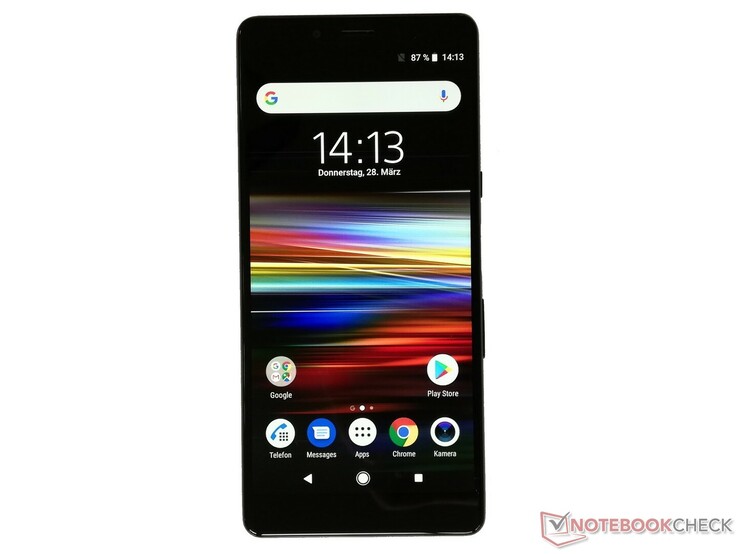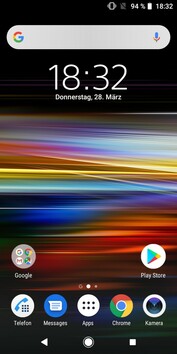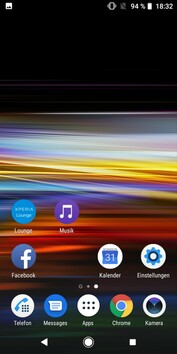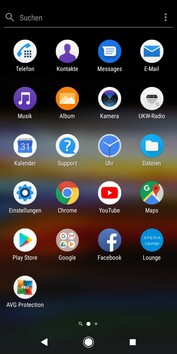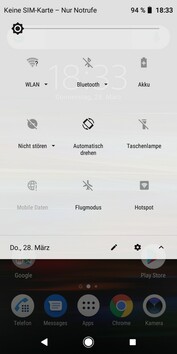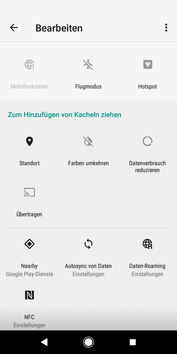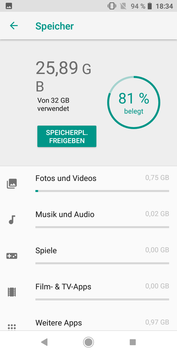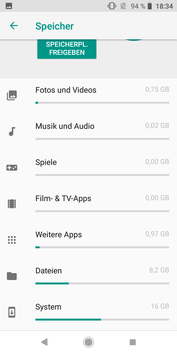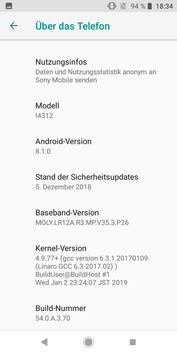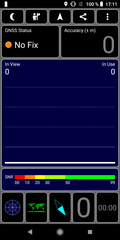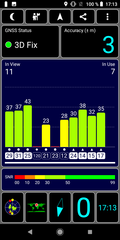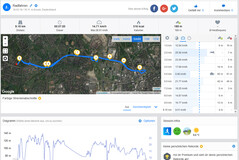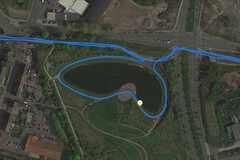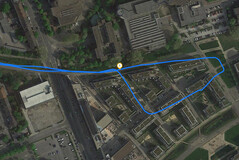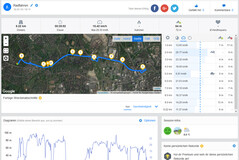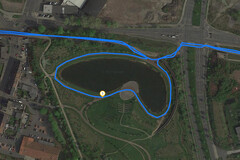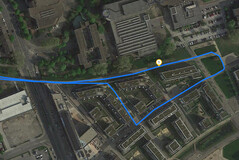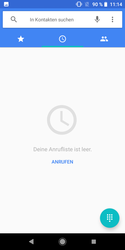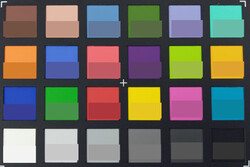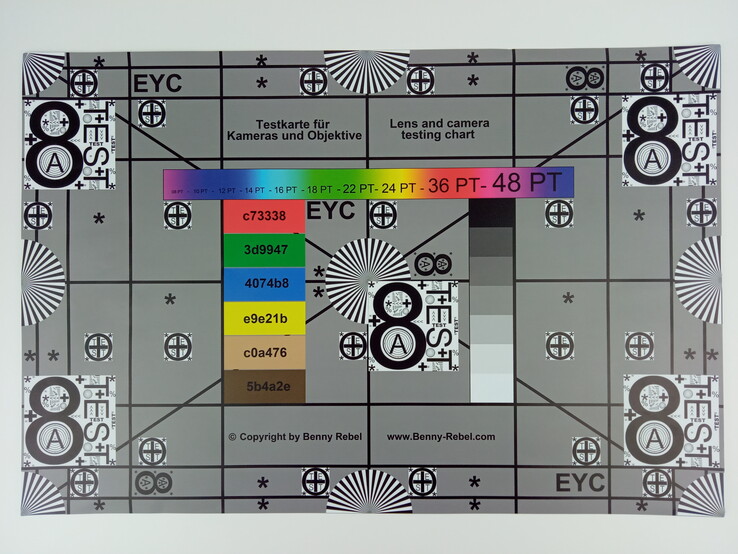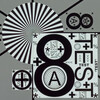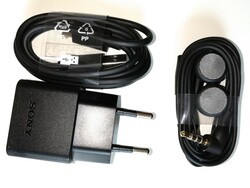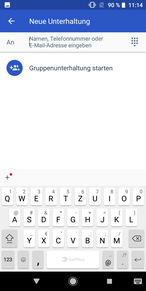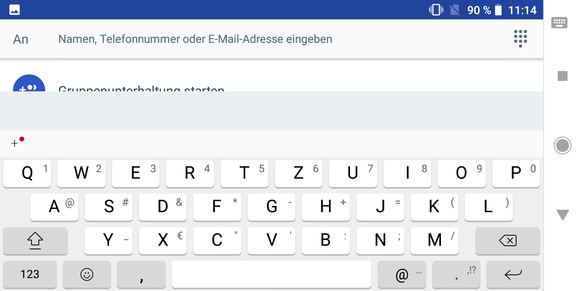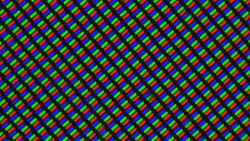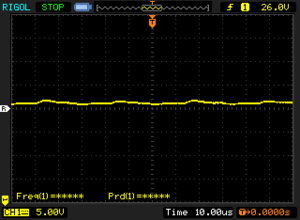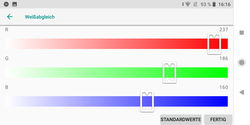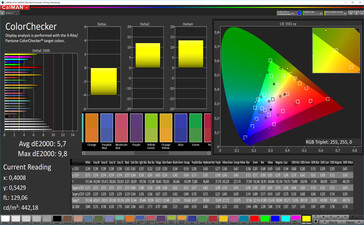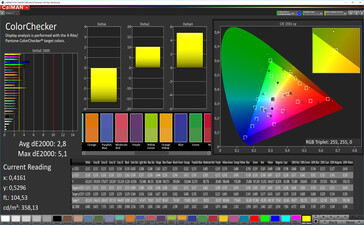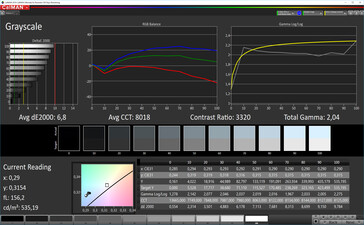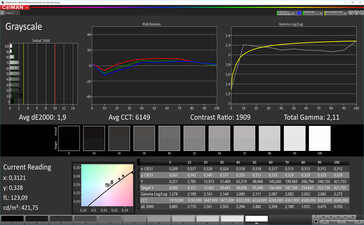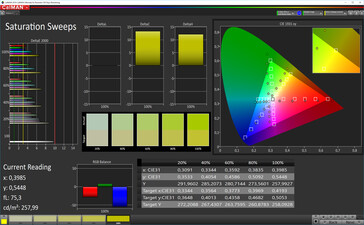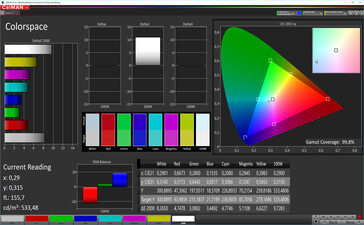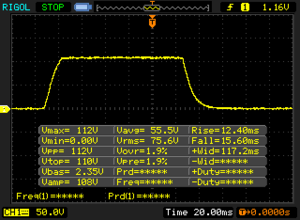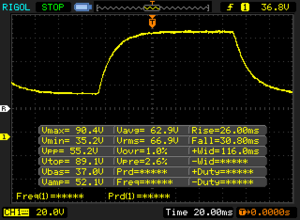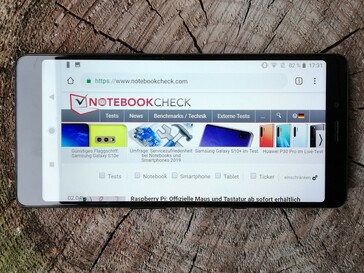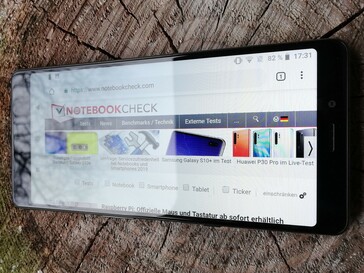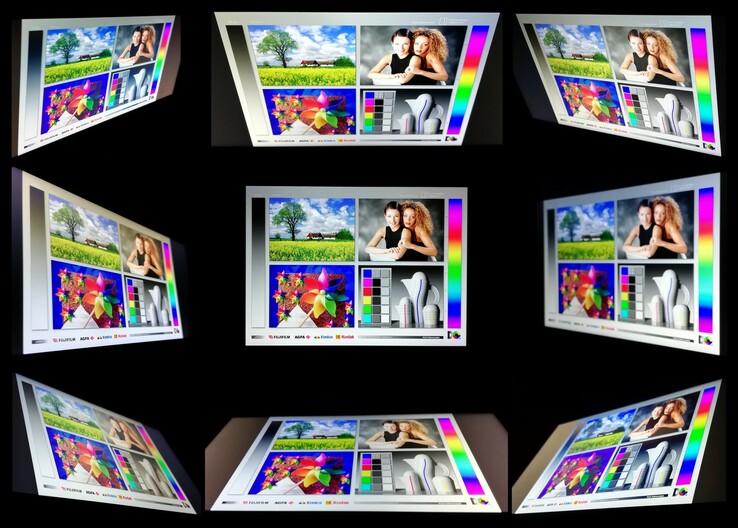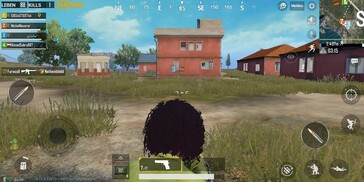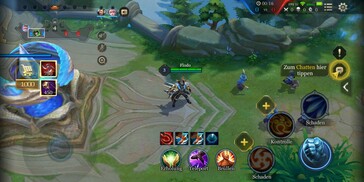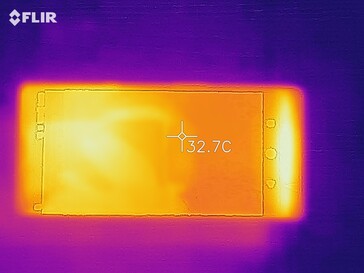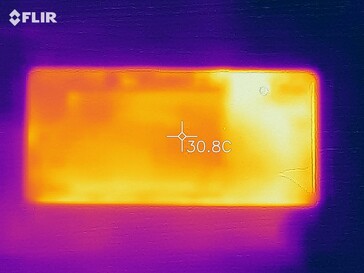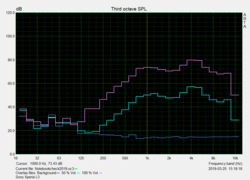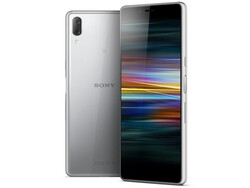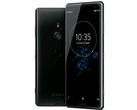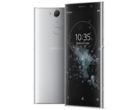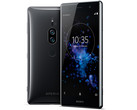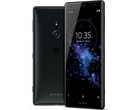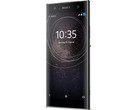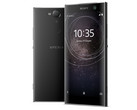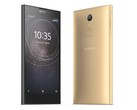Sony Xperia L3 Smartphone Review

With the Xperia L2, Sony was able to deliver a positive result in our tests in the area of affordable mid-range smartphones. Its successor, the Xperia L3, now modernizes mainly the exterior and also introduces a dual-camera system into the more affordable price range. The slimmer design is not only due to the thinner case but also due to the display having the 2:1 format.
For smooth system operation, Sony uses the MediaTek Helio P22-MT6762 SoC and 3 GB of working memory. A PowerVR GE8320 GPU is responsible for the display content, and the 32 GB eMMC flash storage offers a minimum of storage for apps and your own data.
The Xperia L3 is faced by a large number of competing devices in the price range of the more affordable smartphones. For this test, we compare the Sony smartphone with similarly equipped phones from other manufacturers, which include the Nokia 3.1 Plus, Motorola's Moto G7 Play, the Samsung Galaxy J4 Plus (2018), the Archos Diamond Gamma, and the Honor 10 Lite.
Case - A smartphone made of robust plastic
Sony manufactures the Xperia L3 with a metal frame and uses plastic for the back. The display is protected by Corning Gorilla Glass 5 and dominates the front. Above and below the 2:1-format display, respectively, there is a quite large strip, which makes the Android smartphone even taller. The fingerprint sensor is positioned on the right side, so it is easy to reach for right-handed users. On the same side, you can also find the power button and the volume rocker.
Despite the design being significantly slimmer compared to the predecessor, the Sony Xperia L3 is still the thickest device in our comparison field. On the other hand, at a weight of 156 grams (~5.5 oz) it is very light and fits in the hand very well due to its small width.
Equipment - Mid-range hardware from Sony
Sony has equipped the Xperia L3 with a MediaTek Helio P22 MT6762, a PowerVR GE8320 graphics unit, 3 GB of RAM, and 32 GB of eMMC flash storage. This places the hardware at the same level as that of comparable devices, while the L3 is able to distinguish itself from the rest of the smartphones in our test field with a good price-performance ratio.
According to the manufacturer, the internal storage can be expanded by up to 512 GB using a microSD card. At the same time, the dual-SIM functionality is not lost when using a storage card, since Sony has equipped the phone with two nanoSIM slots plus a separate microSD slot. The corresponding tray can be removed from the slot without having to use a tool. The Xperia L3 does not offer VoLTE and VoWLAN functions.
There is a 3.5 mm audio connection to connect a headset or external speakers, and you can transfer data via a USB Type-C connection. However, internally this is only connected via the USB-2.0 standard.
Software - Android Oreo in the Xperia L3
The Sony Xperia L3 is equipped with Android Oreo version 8.1 with the security patches on the level December 5, 2018. The adjustments from the manufacturer are limited to slightly modified icons, allowing newbies and those who switch to the L3 to find their way around its system quickly. In addition to its own music app, Sony has also preinstalled the Xperia Lounge on the L3. This app offers users special deals, information about new products, and news about entertainment. The third-party programs on the Xperia L3 include only the Facebook app and AVG Protection. These can only be deactivated, they cannot be uninstalled. Since the Xperia L3 does not support DRM L1, you cannot watch streaming content in HD quality.
In case more than one user wants to use the Sony Xperia L3, you can set up several user accounts in the settings menu.
Communication and GPS - A Sony smartphone with good GPS
The Sony Xperia L3 is able to create mobile connections to the GSM, 3G, and LTE networks. The latter is possible with LTE Category 4, which is able to reach download speeds up to 150 Mb/s and upload speeds up to 50 Mb/s.
For communication at close range, you can use NFC, Bluetooth 5.0, and WLAN with the 802.11a, b, g, and n standards, with networks in the 2.4 and 5 GHz bands being supported. Compared to the other devices in our test field, the Xperia L3 is able to achieve good transfer rates in our WLAN test. The distance to the second in line turns out to be particularly large, since the Sony smartphone is able to achieve a value that is at least twice as good.
Using the GPS Test app, we evaluate how well the Xperia L3 can determine its location. To do this, the Sony smartphone is able to use GPS and GLONASS, achieving an accuracy of up to three meters outdoors. Indoors, it was unable to locate itself. In addition, it took fairly long in our test until the L3 was able to locate its position.
We compare the GPS in the Xperia L3 with our Garmin Edge 500 reference device on our mandatory bike tour. We hardly see any differences in the recorded route. While we can only see some smaller drops during long straight stretches and sudden changes of direction, those are negligible overall. Thus, the Sony Xperia L3 is also suitable for slightly more demanding navigation tasks.
Telephone Function and Voice Quality - A smartphone with a good connection
To make phone calls, you can use the standard Telephone app, which offers access to your favorite contacts and can also easily display a dial pad. Two additional tabs allow you to list missed calls or show your own contacts.
During the phone conversation, the L3 transfers voices with an average quality. Both conversation partners can be understood clearly, and the noise suppression reliably filters out the worst noises. The volume is sufficient even for slightly noisier surroundings, but in very loud places such as on a noisy road, communication can become problematic.
Cameras - A dual-camera system in the Xperia L3
Sony has equipped the Xperia L3 with a 12 + 2 MP dual-camera system on the back. The 12 MP sensor offers a size of 1/3", a pixel edge size of 1.12 µm, and an f/2.2 aperture with an 80° wide-angle lens. The 2 MP sensor has a size of 1/5", pixel edge size of 1.75 µm, f/2.4 aperture, and 82.4° angle. At the front, Sony has placed an 8 MP camera with a 1/4” sensor, 1.12 μm pixel edge size, 84° wide-angle lens, and f/2.0 aperture. This allows you to take acceptable portrait pictures even in slightly worse light conditions. The colors appear slightly pale in parts, with good light conditions benefiting the image quality significantly. Users can adjust the image quality with preset scene modes in the camera app. In addition, you can manually adjust the brightness and color temperature. There is also a portrait selfie mode, which also offers options to add a bokeh effect, a softening filter for the skin, and some more AI-supported adjustments.
The main camera of the Xperia L3 succeeds in taking panorama images with an average quality. The colors appear slightly pale, and smaller objects in the image remain blurry. Looking closely, you can see some coarse graininess at the borders of objects and in uneven structures, which is also noticeable as image noise in dark areas. Close-up photos offer a better result here, but there is still some slight graininess and the object edges are blurry. Various colors and the contrast look better here. In low-light conditions, the L3 only delivers unsatisfactory results. While there are no areas that disappear in the darkness and the selected objects can still be recognized, the colors, transitions between objects, and finer structures can hardly be seen. Users can also select among presets for various scenarios, adjust the brightness or color temperature, or add a bokeh effect in the camera app here. However, there is no professional mode or anything like it.
Videos recorded by the Sony Xperia L3 offer a similar quality as our test pictures. Users can also select among various scene modes, and an image stabilizer helps to prevent some blurriness. The quality of the recordings can only be influenced by selecting a resolution. The available resolutions include VGA, HD, 18:9, and Full HD. There is no higher frame-rate mode such as 60 fps for recordings.
We evaluate the color reproduction of the Sony smartphone with the ColorChecker Passport. This shows that the colors are reproduced too bright, and dark gray tones turn out too dark.
In controlled light conditions, the camera of the Sony Xperia L3 is able to reproduce our test chart with a good detail level. Fine structures and details can still be recognized, but the colors also seem too bright here. In addition, there is a significant paleness in the lower corners.
Accessories and Warranty - Headset included
The box of the Xperia L3 also includes a USB charger with the corresponding USB Type-C cable and a stereo headset. While Sony does not offer any accessories that are especially designed for the L3, you can find some general accessories such as Bluetooth headsets, car chargers, and replacement chargers on the manufacturer's website.
Sony offers a warranty of 24 months to buyers of the Xperia L3.
Input Devices and Operation - SwiftKey for Android
For text input, Sony offers users of the Xperia L3 the SwiftKey keyboard app, which includes a multitude of customization options such as changing the keyboard size, shape, and appearance. The touchscreen responds directly to touch input, transferring any input to the system without delay. The screen surface is very smooth, and even longer drag-and-drop movements do not represent a problem. The position sensor also registers smartphone movements reliably and quickly adjusts the screen according to the position of the device.
There is a fingerprint sensor on the right side to unlock the smartphone. This responds reliably to the stored fingerprints and unlocks the system with a hardly noticeable delay.
Display - Sony Xperia with good brightness
The display of the Xperia L3 is a 5.7-inch IPS panel that offers a resolution of 1440x720 pixels. At 533 cd/m², the available brightness remains within the average range of comparable devices, and at 89%, the brightness distribution is also adequate for this price range.
In the APL50 test, the Sony smartphone achieves a brightness value of 528 cd/m², and using the sensor, the maximum brightness is 544 cd/m². In our test, the minimum brightness was 19.55 cd/m². During our measurements, we also determined that PWM is not used for brightness adjustment.
| |||||||||||||||||||||||||
Brightness Distribution: 89 %
Center on Battery: 533 cd/m²
Contrast: 2132:1 (Black: 0.25 cd/m²)
ΔE ColorChecker Calman: 2.8 | ∀{0.5-29.43 Ø4.77}
ΔE Greyscale Calman: 1.9 | ∀{0.09-98 Ø5}
99.8% sRGB (Calman 2D)
Gamma: 2.11
CCT: 6149 K
| Sony Xperia L3 IPS, 1440x720, 5.7" | Nokia 3.1 Plus IPS, 1440x720, 6" | Samsung Galaxy J4 Plus 2018 IPS, 1480x720, 6" | Archos Diamond Gamma IPS, 1280x720, 5.5" | Honor 10 Lite IPS, 2340x1080, 6.2" | Motorola Moto G7 Play IPS, 1512x720, 5.7" | |
|---|---|---|---|---|---|---|
| Screen | -49% | -110% | -68% | -24% | -62% | |
| Brightness middle (cd/m²) | 533 | 526 -1% | 558 5% | 310 -42% | 467 -12% | 479 -10% |
| Brightness (cd/m²) | 533 | 510 -4% | 549 3% | 313 -41% | 446 -16% | 481 -10% |
| Brightness Distribution (%) | 89 | 94 6% | 89 0% | 89 0% | 89 0% | 94 6% |
| Black Level * (cd/m²) | 0.25 | 0.17 32% | 0.57 -128% | 0.23 8% | 0.58 -132% | 0.37 -48% |
| Contrast (:1) | 2132 | 3094 45% | 979 -54% | 1348 -37% | 805 -62% | 1295 -39% |
| Colorchecker dE 2000 * | 2.8 | 6.64 -137% | 7 -150% | 6.51 -133% | 1.5 46% | 4.91 -75% |
| Colorchecker dE 2000 max. * | 5.1 | 10.02 -96% | 13.3 -161% | 10.21 -100% | 4.5 12% | 9.47 -86% |
| Greyscale dE 2000 * | 1.9 | 6.4 -237% | 9.4 -395% | 5.6 -195% | 2.4 -26% | 6.4 -237% |
| Gamma | 2.11 104% | 2.344 94% | 2.15 102% | 2.903 76% | 2.22 99% | 2.108 104% |
| CCT | 6149 106% | 7989 81% | 9626 68% | 7498 87% | 6387 102% | 7292 89% |
* ... smaller is better
Screen Flickering / PWM (Pulse-Width Modulation)
| Screen flickering / PWM not detected | |||
In comparison: 53 % of all tested devices do not use PWM to dim the display. If PWM was detected, an average of 8080 (minimum: 5 - maximum: 343500) Hz was measured. | |||
Our measurements attest the display of the Xperia L3 with a good contrast ratio of 2132:1 and also a good black value of 0.25 cd/m². With this, the Sony smartphone offers slightly better values than customary in this price range, but it is still not able to claim first place in our test field.
The CalMAN analysis also shows that the screen displays too little of the red tones in the color scale and too much of the blue tones in the state of delivery. However, you can balance the colors via optimization. Users can pick our adjustments of the color display from the screenshot of the white balance and enter them into their Xperia L3 to achieve the optimized color display.
Display Response Times
| ↔ Response Time Black to White | ||
|---|---|---|
| 28 ms ... rise ↗ and fall ↘ combined | ↗ 12.4 ms rise | |
| ↘ 15.6 ms fall | ||
| The screen shows relatively slow response rates in our tests and may be too slow for gamers. In comparison, all tested devices range from 0.1 (minimum) to 240 (maximum) ms. » 70 % of all devices are better. This means that the measured response time is worse than the average of all tested devices (20.2 ms). | ||
| ↔ Response Time 50% Grey to 80% Grey | ||
| 56.8 ms ... rise ↗ and fall ↘ combined | ↗ 26 ms rise | |
| ↘ 30.8 ms fall | ||
| The screen shows slow response rates in our tests and will be unsatisfactory for gamers. In comparison, all tested devices range from 0.165 (minimum) to 636 (maximum) ms. » 94 % of all devices are better. This means that the measured response time is worse than the average of all tested devices (31.6 ms). | ||
The Sony Xperia L3 can be used easily outdoors. The brightness of the screen is sufficient to display the image content in an easily readable manner, even on sunny days. However, away from shady places reflections of the surrounding objects hinder the view of the display, making reading the screen content strenuous in the long run.
The viewing angles of the IPS panel of the Sony Xperia L3 are very stable. The screen content can be read from almost any angle without being distorted or having distorted colors. As long as there are no reflections hindering the view of the display, the Sony smartphone can therefore also be used from unusual positions.
Performance - An affordable smartphone with a good performance
A MediaTek Helio P22-MT6762 SoC and 3 GB of working memory ensure a smooth system operation of the Sony Xperia L3. A PowerVR GE8320 graphics unit handles the display content, and there is 32 GB of eMMC flash storage to store apps and your own data. This equipment makes the Sony smartphone well-suited for many everyday applications that make low to medium demands on the hardware performance.
In our benchmarks, the Xperia L3 is able to claim one of the places in the middle of our test field. However, Geekbench consistently refused to recognize an active Internet connection and therefore couldn't run. GFXBench crashed immediately after the start and also did not deliver any results. Smartphones with comparable hardware such as the Nokia 3.1 Plus range in the middle of the field of our comparison devices.
| AnTuTu v6 - Total Score (sort by value) | |
| Sony Xperia L3 | |
| Nokia 3.1 Plus | |
| Samsung Galaxy J4 Plus 2018 | |
| Archos Diamond Gamma | |
| Motorola Moto G7 Play | |
| Average Mediatek Helio P22 MT6762 (52433 - 57309, n=7) | |
In the browser benchmarks, the Sony smartphone achieved results that were slightly above the average of the other devices that use MediaTek's Helio P22 MT6762. Compared to smartphones of the same price range, the L3 was also only able to place in the middle of the field.
In everyday operation, the Xperia L3 delivers a good browser performance. Websites are rendered quickly, and only more complex media content requires a short wait time until it is loaded.
| Octane V2 - Total Score | |
| Average of class Smartphone (2228 - 126661, n=197, last 2 years) | |
| Honor 10 Lite (Chrome 71) | |
| Motorola Moto G7 Play | |
| Nokia 3.1 Plus (Chrome 71) | |
| Sony Xperia L3 (Chrome 72) | |
| Average Mediatek Helio P22 MT6762 (3312 - 4508, n=9) | |
| Archos Diamond Gamma (Chrome 69) | |
| Samsung Galaxy J4 Plus 2018 (Chrome 71.0.3578.98) | |
| Mozilla Kraken 1.1 - Total | |
| Archos Diamond Gamma (Chrome 69) | |
| Samsung Galaxy J4 Plus 2018 (Chrome 71.0.3578.98) | |
| Average Mediatek Helio P22 MT6762 (10846 - 12799, n=9) | |
| Sony Xperia L3 (Chrome 72) | |
| Nokia 3.1 Plus (Chrome 71) | |
| Motorola Moto G7 Play | |
| Honor 10 Lite (Chrome 71) | |
| Average of class Smartphone (257 - 28190, n=157, last 2 years) | |
| WebXPRT 3 - Overall | |
| Average of class Smartphone (38 - 380, n=30, last 2 years) | |
| Honor 10 Lite (Chrome 71) | |
| Sony Xperia L3 (Chrome 72) | |
| Average Mediatek Helio P22 MT6762 (26 - 30, n=7) | |
| Samsung Galaxy J4 Plus 2018 (Chrome 71.0.3578.98) | |
| Jetstream 2 - 2.0 Total Score | |
| Average of class Smartphone (23.8 - 387, n=149, last 2 years) | |
| Sony Xperia L3 (Chrome 72) | |
| Average Mediatek Helio P22 MT6762 (12.9 - 13.9, n=3) | |
| Speedometer 2.0 - Result 2.0 | |
| Average of class Smartphone (15.2 - 643, n=121, last 2 years) | |
| Sony Xperia L3 (Chrome 72) | |
| Average Mediatek Helio P22 MT6762 (n=1) | |
* ... smaller is better
For storage of apps and their own data, users of the Xperia L3 can take advantage of the 32 GB internal storage. However, in our benchmark tests that only achieves below-average values and has to be content with one of the lower places in the field of comparable smartphones.
According to the manufacturer, the internal storage can be expanded by up to 512 GB via the internal microSD card reader. Using our Toshiba Exceria Pro M501 reference card, the read and write rates of the card reader are on a similar level as those of comparable devices. However, you cannot move apps onto the storage card or reformat it as internal storage.
| Sony Xperia L3 | Nokia 3.1 Plus | Samsung Galaxy J4 Plus 2018 | Archos Diamond Gamma | Honor 10 Lite | Motorola Moto G7 Play | Average 32 GB eMMC Flash | Average of class Smartphone | |
|---|---|---|---|---|---|---|---|---|
| AndroBench 3-5 | -7% | 10% | 0% | 80% | 90% | 10% | 1417% | |
| Sequential Read 256KB (MB/s) | 290.9 | 272.5 -6% | 292.1 0% | 276.5 -5% | 288.5 -1% | 289 -1% | 242 ? -17% | 2242 ? 671% |
| Sequential Write 256KB (MB/s) | 87.5 | 35.72 -59% | 99.6 14% | 117.2 34% | 190.6 118% | 111 27% | 100.5 ? 15% | 1881 ? 2050% |
| Random Read 4KB (MB/s) | 28.83 | 52.4 82% | 48.42 68% | 27.7 -4% | 45.15 57% | 74 157% | 43.1 ? 49% | 299 ? 937% |
| Random Write 4KB (MB/s) | 16.36 | 8.33 -49% | 13.33 -19% | 11.8 -28% | 66.1 304% | 73 346% | 22.3 ? 36% | 345 ? 2009% |
| Sequential Read 256KB SDCard (MB/s) | 80.9 ? | 81.3 ? 0% | 76.7 ? -5% | 84.3 ? 4% | 75.8 ? -6% | 84.7 ? 5% | 71.8 ? -11% | |
| Sequential Write 256KB SDCard (MB/s) | 61.7 ? | 55.2 ? -11% | 62.3 ? 1% | 61.4 ? 0% | 67 ? 9% | 64.1 ? 4% | 52.9 ? -14% |
Games - Sony smartphone suitable for gaming
A PowerVR GE8320 handles the display of image content in the Xperia L3. This integrated graphics unit is used in mid-range smartphones and tablets and is suited for applications with low to medium demands on the graphics performance. With this, modern games can mostly be played smoothly at low graphics settings, and sometimes even medium to high settings are possible depending on the game.
The Arena of Valor and PUBG Mobile games that we tested ran mostly smoothly, with the first being playable even at high graphics settings. While the latter game stuttered significantly, particularly in the initial phase, it stabilized more and more after the parachute landing and then only showed some occasional drops in the frame rate. Overall, the frame rate was just above the 24 fps, the minimum that is perceived to be barely smooth. The touchscreen responded to our inputs reliably and the smooth display surface also enabled longer gaming sessions without straining the fingertips too much.
PUBG Compare
Arena of Valor
Emissions - The Sony Xperia L3 does not get too warm
Temperatures
In our test, we measure temperatures on the surface of the Sony Xperia L3 up to 28.4 °C (83 °F) during idle operation and a maximum of 32.9 °C (91 °F) under load. With this, the Android smartphone merely feels warm and never gets too hot to hold it in the hand.
Unfortunately we were unable to run the demanding GFXBench constant load test, so that we cannot make any exact statement on the performance after a longer time period. However, we did not notice any drop in performance even after intense usage.
(+) The maximum temperature on the upper side is 32.6 °C / 91 F, compared to the average of 35.2 °C / 95 F, ranging from 21.9 to 247 °C for the class Smartphone.
(+) The bottom heats up to a maximum of 32.9 °C / 91 F, compared to the average of 34 °C / 93 F
(+) In idle usage, the average temperature for the upper side is 28 °C / 82 F, compared to the device average of 32.9 °C / 91 F.
Speaker
The speaker of the Sony Xperia L3 offers a good volume and a sound spectrum that is suited for occasional playing of music. The high mids are slightly overemphasized and the lows lack completely. For longer enjoyment of media content, external speakers or headphones such as the included stereo headset, which offers a higher volume and more balanced sound spectrum, are recommended.
In addition to Bluetooth 5.0 and Google Cast, there is also a 3.5-mm audio port, which accepts the corresponding plugs tightly and does not impact the sound negatively.
Sony Xperia L3 audio analysis
(+) | speakers can play relatively loud (86.4 dB)
Bass 100 - 315 Hz
(-) | nearly no bass - on average 30.6% lower than median
(±) | linearity of bass is average (10.1% delta to prev. frequency)
Mids 400 - 2000 Hz
(+) | balanced mids - only 4.9% away from median
(+) | mids are linear (5.6% delta to prev. frequency)
Highs 2 - 16 kHz
(±) | higher highs - on average 5.4% higher than median
(+) | highs are linear (5.6% delta to prev. frequency)
Overall 100 - 16.000 Hz
(±) | linearity of overall sound is average (22.5% difference to median)
Compared to same class
» 48% of all tested devices in this class were better, 6% similar, 46% worse
» The best had a delta of 11%, average was 35%, worst was 134%
Compared to all devices tested
» 65% of all tested devices were better, 6% similar, 29% worse
» The best had a delta of 4%, average was 24%, worst was 134%
Nokia 3.1 Plus audio analysis
(±) | speaker loudness is average but good (76.6 dB)
Bass 100 - 315 Hz
(-) | nearly no bass - on average 28.8% lower than median
(±) | linearity of bass is average (9.9% delta to prev. frequency)
Mids 400 - 2000 Hz
(+) | balanced mids - only 1.8% away from median
(+) | mids are linear (4.8% delta to prev. frequency)
Highs 2 - 16 kHz
(+) | balanced highs - only 3.8% away from median
(+) | highs are linear (5.1% delta to prev. frequency)
Overall 100 - 16.000 Hz
(±) | linearity of overall sound is average (27.8% difference to median)
Compared to same class
» 72% of all tested devices in this class were better, 5% similar, 23% worse
» The best had a delta of 11%, average was 35%, worst was 134%
Compared to all devices tested
» 84% of all tested devices were better, 3% similar, 13% worse
» The best had a delta of 4%, average was 24%, worst was 134%
Battery Life - An efficient smartphone with a good battery life
Power Consumption
Our measurements attest the Sony smartphone with a minimum power consumption of 0.57 watts in idle operation and a maximum of 4.15 watts under load. In combination with additional measurements, the Xperia L3 proves itself not only as the most efficient smartphone in our test field, but it also uses significantly less power than other devices with the same SoC.
The included charger offers 7.5 watts of power, so it is sufficiently sized to always be able to reliably provide the Sony Xperia L3 with enough power.
| Off / Standby | |
| Idle | |
| Load |
|
Key:
min: | |
| Sony Xperia L3 3300 mAh | Nokia 3.1 Plus 3500 mAh | Samsung Galaxy J4 Plus 2018 3300 mAh | Archos Diamond Gamma 3000 mAh | Honor 10 Lite 3400 mAh | Motorola Moto G7 Play 3000 mAh | Average Mediatek Helio P22 MT6762 | Average of class Smartphone | |
|---|---|---|---|---|---|---|---|---|
| Power Consumption | -56% | -30% | -121% | -61% | -50% | -9% | -70% | |
| Idle Minimum * (Watt) | 0.57 | 1 -75% | 0.68 -19% | 1.7 -198% | 1 -75% | 1 -75% | 0.669 ? -17% | 0.849 ? -49% |
| Idle Average * (Watt) | 1.5 | 2.4 -60% | 1.78 -19% | 2.6 -73% | 2.19 -46% | 1.7 -13% | 1.577 ? -5% | 1.446 ? 4% |
| Idle Maximum * (Watt) | 1.51 | 2.9 -92% | 1.82 -21% | 3.8 -152% | 2.2 -46% | 2.6 -72% | 1.851 ? -23% | 1.632 ? -8% |
| Load Average * (Watt) | 3.09 | 3.7 -20% | 4.44 -44% | 6.3 -104% | 4.64 -50% | 4.1 -33% | 2.91 ? 6% | 6.93 ? -124% |
| Load Maximum * (Watt) | 4.15 | 5.5 -33% | 6.13 -48% | 7.4 -78% | 7.7 -86% | 6.5 -57% | 4.41 ? -6% | 11.3 ? -172% |
* ... smaller is better
Battery Life
The Xperia L3 is able to last for 10 h 41 m in our realistic WLAN test before it has to be reconnected to the charger. This battery life places the Sony smartphone in the middle of our test field. Comparable devices such as the Honor 10 Lite only achieve a significantly shorter battery life with a higher battery capacity. On the other hand, the Samsung Galaxy J6 Plus is able to last slightly longer while having the same capacity.
Using the included quick-charger, the Sony Xperia L3 is completely recharged after slightly less than three hours.
| Sony Xperia L3 3300 mAh | Nokia 3.1 Plus 3500 mAh | Samsung Galaxy J4 Plus 2018 3300 mAh | Archos Diamond Gamma 3000 mAh | Honor 10 Lite 3400 mAh | Motorola Moto G7 Play 3000 mAh | |
|---|---|---|---|---|---|---|
| Battery runtime | 43% | 17% | -20% | -28% | 7% | |
| Reader / Idle (h) | 35.5 | 28.8 -19% | 25.6 -28% | |||
| H.264 (h) | 12.5 | 14 12% | 8.4 -33% | |||
| WiFi v1.3 (h) | 10.7 | 15.3 43% | 11.8 10% | 8.6 -20% | 8.1 -24% | 11.5 7% |
| Load (h) | 4 | 6.6 65% | 3 -25% |
Pros
Cons
Verdict - Sony retires the brick design
With the Xperia L3, Sony delivers a smartphone with a good price-performance ratio. The built-in hardware is adequate for the price range, and the performance is sufficient for all the usual everyday tasks. The dual camera setup can take acceptable snapshots, and the speaker is even suited for occasional media reproduction. The battery life is also at the level of the competition, and in terms of the design, Sony has finally taken a big step forward.
However, the test also revealed some weaknesses that can mainly be traced back to the software. Several benchmark programs were unable to run or did not recognize the active Internet connection. Whether these are problems that also become generally noticeable, users will only find out during constant usage. However, a software update in the future might easily alleviate any problems that come up.
While the Sony Xperia L3 is a good entry-level smartphone, it struggles with some smaller software problems.
Sony Xperia L3
- 04/09/2019 v6 (old)
Mike Wobker


